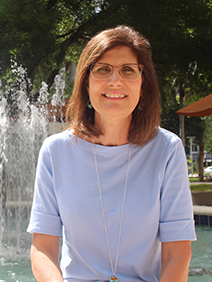What if We Never Reach Herd Immunity with COVID-19?

For months, herd immunity was the mantra of COVID-19 lockdown.
Reach this goal, many thought, and we would return to our old routines. But as society opens up, more scientists acknowledge that achieving this objective may not happen. Though more people can claim immunity to this coronavirus, this magical tipping point feels unattainable — at least for the immediate future.
“Herd immunity is this ideal we want, but we’re not anywhere close to it,” says Susanne Doblecki-Lewis, M.D., an infectious disease specialist with the University of Miami Health System. (An estimated 40% of the U.S. population is considered completely vaccinated, but that number varies widely from state to state and between cities and rural areas.)
Acknowledging the evolving immunity landscape has meant a change in messaging for public health officials. Initially, they were hoping for the kind of protection vaccines have provided against such diseases as polio, measles, mumps, and chickenpox.
Now, public health officials predict we’re looking at a scenario that more closely resembles the flu — seasonal shots and regular outbreaks as the virus eventually becomes a “background illness.”
There are many explanations for this shift.
But first, it’s essential to understand what herd immunity is and why it’s important in eradicating or controlling infections.
Herd immunity is usually expressed as a certain percentage that serves as a threshold for community resistance to a disease, either through vaccination or prior infection. That tipping point doesn’t have to be 100%, but it must be high enough to prevent the virus from spreading.
In the case of COVID-19, that percentage has been a moving target.
Experts originally put it at about 60% early in the pandemic. But as variants emerged, presidential adviser Dr. Anthony Fauci said between 75% and 85% of people need to be immune to the virus for the U.S. to “essentially crush this outbreak.” Fast forward a few months into 2021, and infectious disease experts have upped that number. Some say that 90% is needed for COVID to fade into the background as just another pesky coronavirus.
Why the difference in numbers?
Here are a few explanations: First, more transmissible variants are emerging from Brazil and Asia. This means that a higher percentage of people need to be immune to prevent the spread. Or as Dr. Dobleck-Lewis explains: “If a virus spreads more easily, the threshold for herd immunity goes up.” That’s because there are more people potentially exposed by each ill person. If more than one of those people is unprotected, the virus will continue to spread.
Second, reports from around the globe note that some COVID survivors are getting re-infected with different strains. And more than 5,000 vaccinated people also have tested positive for the virus. Unlike measles, this is not a one-and-done disease.
Further complicating matters: vaccine hesitancy.
According to a recent NPR/Marist poll, one in four Americans said they would refuse a coronavirus vaccine outright if offered. Another 5% are undecided. This worries researchers like Dr. Doblecki-Lewis, who say this reticence makes herd immunity nearly impossible.
“Without widespread vaccination, we will continue to see the circulation of the virus,” she explains.
Equally problematic is the slow rollout and the lack of access to vaccines in the rest of the world. Even if we reach herd immunity in the U.S., it will solve only part of a long equation with many variables.
We need to think of this globally, not just one spot or one country. If the people who have been vaccinated all live on one side of the street, what happens to the other side when the virus is introduced? As long as there are high levels of infection anywhere, there will always be the chance of spread and the increased possibility of new variants.
Dr. Doblecki-Lewis
Dr. Doblecki-Lewis, who was the lead researcher of a clinical trial that tested the Moderna vaccine at the Miller School of Medicine, says the public shouldn’t obsess over a magical herd immunity percentage.
Instead, we should focus on vaccines. The more people who get the shot, the more protection we all have. Herd immunity for other diseases has taken years, if not decades. So she’s not willing to give up on this holy grail of infectious medicine.
“Vaccines work super, super well in terms of keeping people out of the hospital,” she says. “They go a long way to prevent serious illness.”

Ana Veciana-Suarez, Guest Columnist
Ana is a regular contributor to the University of Miami Health System. She is a renowned journalist and author who has worked at The Miami Herald, The Miami News, and The Palm Beach Post. Visit her website at anavecianasuarez.com or follow @AnaVeciana on Twitter.
Tags: covid-19 in Miami, Susanne Doblecki-Lewis, vaccine hesitancy, Vaccines
